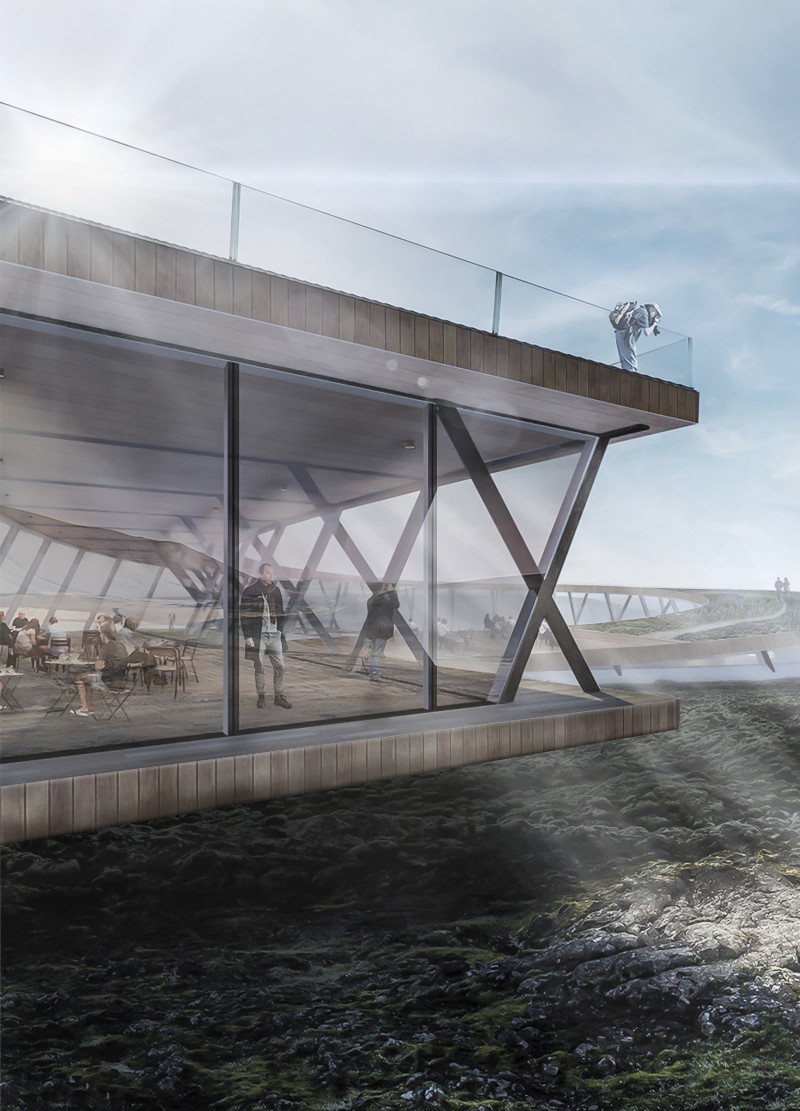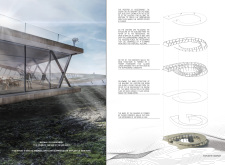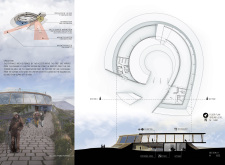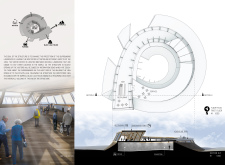5 key facts about this project
Functionally, the visitor center is designed to facilitate the flow of visitors through a series of carefully considered spaces. The circular form of the building promotes an intuitive movement throughout the interior, encouraging visitors to explore and engage with their surroundings. This journey is not only spatial but also educational, as the architecture integrates various displays and information panels that inform visitors about the local geology, ecology, and cultural history. The facility fosters a deepened understanding and appreciation for the landscape, highlighting the importance of conservation and respect for nature.
Key elements of the design include a robust yet aesthetically appealing material palette. On the exterior, the use of closed concrete walls evokes a sense of solidity and permanence, reminiscent of the region's volcanic rock formations. This choice is complemented by a timber framework that introduces warmth and texture, facilitating the large openings that invite natural light into the interior. Expansive glass façades further enhance the connection between the inside and outside, allowing visitors to immerse themselves in the scenic beauty that surrounds the center.
The layout promotes accessibility, ensuring that all visitors, including those with mobility challenges, can navigate the space with ease. Thoughtful transitions from various entry points lead visitors into the main communal area, facilitating an immediate connection to the rich landscape outside. The building's design accommodates diverse user needs, promoting an inclusive environment where everyone can gather and learn.
Unique design approaches are evident throughout the project. The circular layout not only symbolizes unity and inclusivity but also aligns with the natural flow of the terrain, echoing the undulating forms of the landscape. The architectural decisions reflect an understanding of the site's context, showcasing a commitment to sustainability and environmental stewardship. By prioritizing transparency and interaction with nature, the visitor center becomes a true embodiment of its geographical location, enhancing the visitor experience through design that is both functional and harmonious.
Moreover, the center's educational focus is significant, as it uses architecture not just as a backdrop but as an integral part of the learning process. Information about local geological features and cultural narratives is seamlessly woven into the architecture, allowing visitors to engage with the content in a meaningful manner. Each aspect of design contributes to a narrative that informs and inspires, elevating the visitor's journey beyond a mere stop at the center.
For those interested in exploring the specifics of this architectural project, a thorough review of the architectural plans, sections, and innovative design ideas is encouraged. These elements provide valuable insights into the thought processes and concepts that shape this remarkable visitor center. Engage with the details of the project presentation to appreciate the careful consideration that has gone into every aspect of its design and function.


























